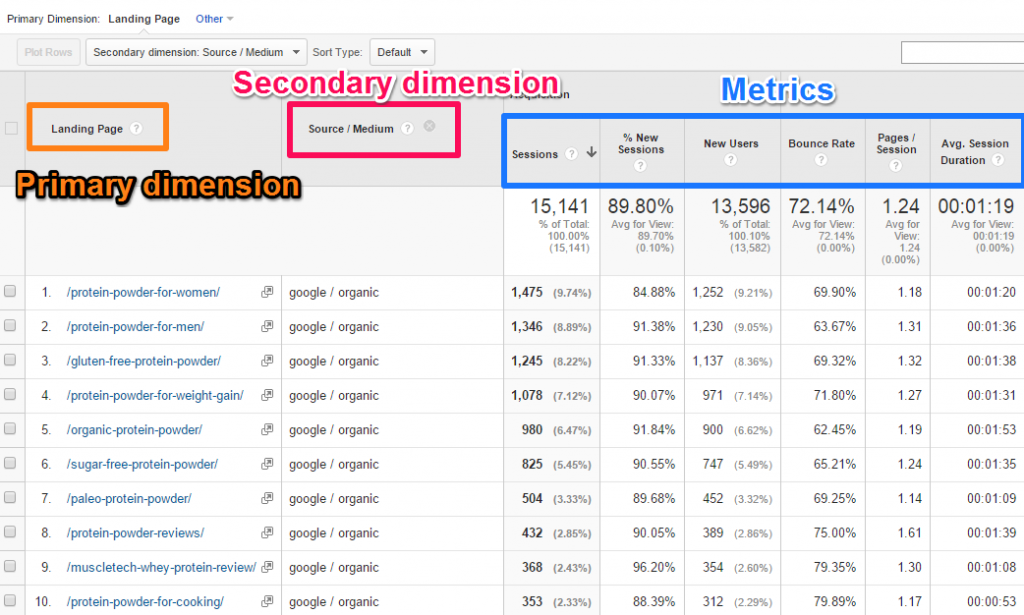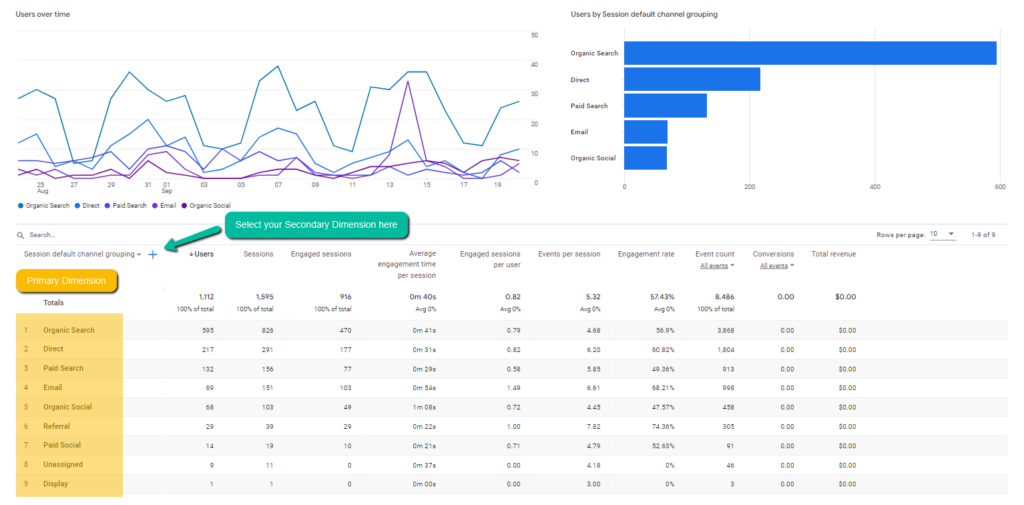Google Analytics Mastery: Unveiling the Potential of Secondary Dimension
Wiki Article
Unlocking the Power of Second Dimension Analytics for Enhanced Information Insights and Decision-Making
In the world of data analytics, key dimensions commonly take the spotlight, yet the true depth of insights lies within the world of additional dimensions. By taking advantage of the power of second dimension analytics, organizations can introduce hidden fads, discover correlations, and extract extra purposeful conclusions from their data.
Significance of Secondary Dimensions
Checking out the relevance of secondary dimensions in analytics reveals the surprise layers of information insights important for notified decision-making in various domains. Additional measurements supply a much deeper understanding of main data by supplying additional context and point of views. By integrating secondary measurements right into analytics, organizations can draw out more detailed and nuanced understandings from their datasets.One trick importance of additional measurements is their ability to section and categorize main information, allowing for a more comprehensive evaluation of certain parts within a dataset. When looking at the data as a whole, this segmentation allows services to determine patterns, trends, and outliers that might not be noticeable. Furthermore, second dimensions help in discovering connections and reliances in between different variables, leading to more precise projecting and anticipating modeling.
Additionally, additional dimensions play an important duty in boosting data visualization and reporting. By including second dimensions to visualizations, such as charts or charts, analysts can produce much more helpful and insightful representations of data, helping with far better interaction of searchings for to stakeholders. Generally, the integration of secondary dimensions in analytics contributes in opening the complete possibility of information and driving evidence-based decision-making.
Secret Advantages of Utilizing Secondary Measurements
Making use of secondary measurements in analytics offers companies a strategic benefit by increasing the depth and granularity of data understandings. One crucial advantage of incorporating second dimensions is the capability to sector and filter information, enabling a more in-depth analysis of certain aspects within a dataset. This segmentation allows organizations to gain a much more nuanced understanding of their target market, efficiency metrics, and various other essential data factors. By dissecting information utilizing second dimensions such as time, area, gadget kind, or user demographics, organizations can reveal patterns, fads, and correlations that may or else stay hidden.Furthermore, the usage of second measurements boosts the context in which main data is interpreted. It gives a more thorough view of the relationships between various variables, allowing organizations to make informed choices based on an extra all natural understanding of their data. In addition, secondary dimensions promote the recognition of outliers, anomalies, and areas for optimization, inevitably bring about much more reliable approaches and enhanced results. By leveraging second measurements in analytics, companies can harness the complete capacity of their information to drive far better decision-making and attain their service purposes.
Advanced Data Analysis Strategies
A deep study advanced information evaluation strategies exposes advanced techniques for drawing out beneficial understandings from intricate datasets. One such strategy is artificial intelligence, where formulas are employed to determine patterns within data, anticipate end results, and make data-driven choices. This technique allows for the automation of logical model structure, allowing the processing of huge volumes of data at a much faster rate than standard techniques.One more innovative strategy is predictive analytics, which utilizes statistical algorithms and artificial intelligence strategies to forecast future outcomes based on historic data. By evaluating patterns and trends, businesses can find more information expect client habits, market trends, and possible risks, encouraging them to make aggressive choices.
Furthermore, message mining and belief evaluation are useful methods for extracting understandings from disorganized data resources such as social networks comments, client reviews, and survey actions. By analyzing message information, companies can understand client point of views, recognize arising trends, and boost their services or products based on comments.
Enhancing Decision-Making Via Second Dimensions

Enhancing decision-making via second dimensions enables organizations to make even more educated and targeted tactical selections. As an example, by segmenting client data based upon additional dimensions like acquiring background or engagement levels, business can customize their advertising strategies to click here for more info certain audience sections, causing enhanced conversion rates and customer fulfillment. Secondary dimensions can help recognize relationships and connections in between different variables, enabling organizations to make data-driven choices that drive growth and success.
Executing Secondary Measurement Analytics
When integrating second dimensions in analytics, organizations can open deeper insights that drive calculated decision-making and boost overall efficiency. Carrying out secondary measurement analytics calls for a structured method to make certain efficient usage of this effective tool. The first action is to determine the key metrics and dimensions that line up with the organization's tactical goals. This involves comprehending the specific questions the organization looks for to address and the information points required to address them.
Additionally, companies should take advantage of progressed analytics tools and technologies to simplify the procedure of incorporating second dimensions. These devices can automate data handling, evaluation, and visualization, allowing organizations to concentrate on interpreting insights instead than hand-operated information manipulation.
Final Thought
In verdict, second dimension analytics play an essential function in boosting data insights and decision-making processes. By using sophisticated information analysis methods and applying secondary dimensions effectively, organizations can open the power of their information to drive critical organization choices.In the realm of data analytics, key measurements commonly take the limelight, but the true deepness of insights lies within the world of additional dimensions.Utilizing second dimensions in analytics offers companies a calculated advantage by augmenting the deepness and granularity of data insights. By leveraging second dimensions in analytics, companies can harness the full potential of their information to drive much better decision-making and achieve their organization goals.
Executing information validation procedures and routine audits can help keep data top quality and dependability.
By utilizing sophisticated data evaluation techniques and carrying out secondary measurements effectively, companies can unlock the power of their information to drive strategic service decisions.
Report this wiki page